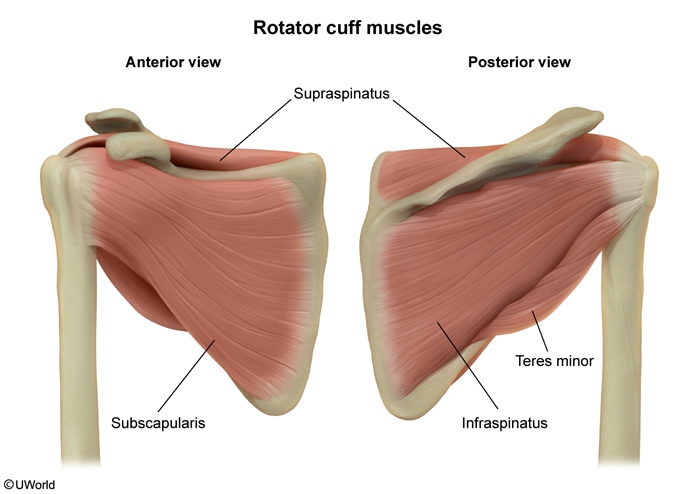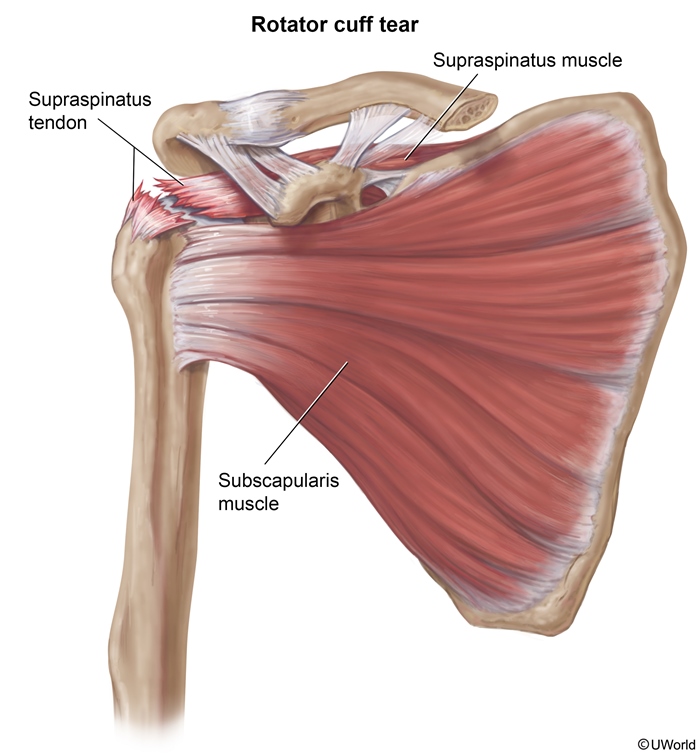Rotator Cuff Syndrome
Article Sections
Introduction
Rotator cuff syndrome refers to a range of conditions involving the rotator cuff muscles and their associated tendons, including tendinopathy, impingement syndrome, and tendon tears. It is a common cause of shoulder pain and dysfunction, particularly in patients age >40 who engage in repetitive overhead activities (eg, painters). Rotator cuff syndrome usually presents with pain in the lateral shoulder that is worse with abduction.
Anatomy and physiology
The rotator cuff is a group of 4 muscles that surround the shoulder joint (Table 1). The tendons originate from the scapula and insert on the humerus, with each muscle controling specific movements of the shoulder (Figure 1).
- Supraspinatus muscle: abducts the arm (for the initial 15 degrees, then the deltoid takes over)
- Infraspinatus muscle: externally rotates the arm
Continue Learning with UWorld
Get the full Rotator Cuff Syndrome article plus rich visuals, real-world cases, and in-depth insights from medical experts, all available through the UWorld Medical Library.
Figures

